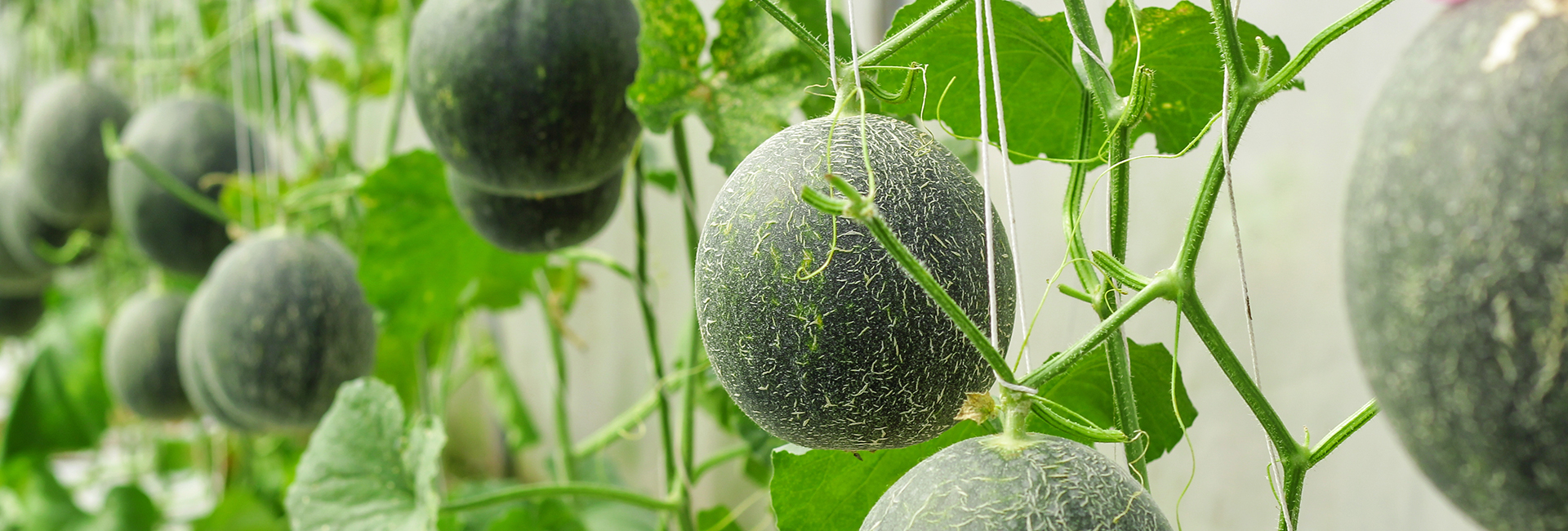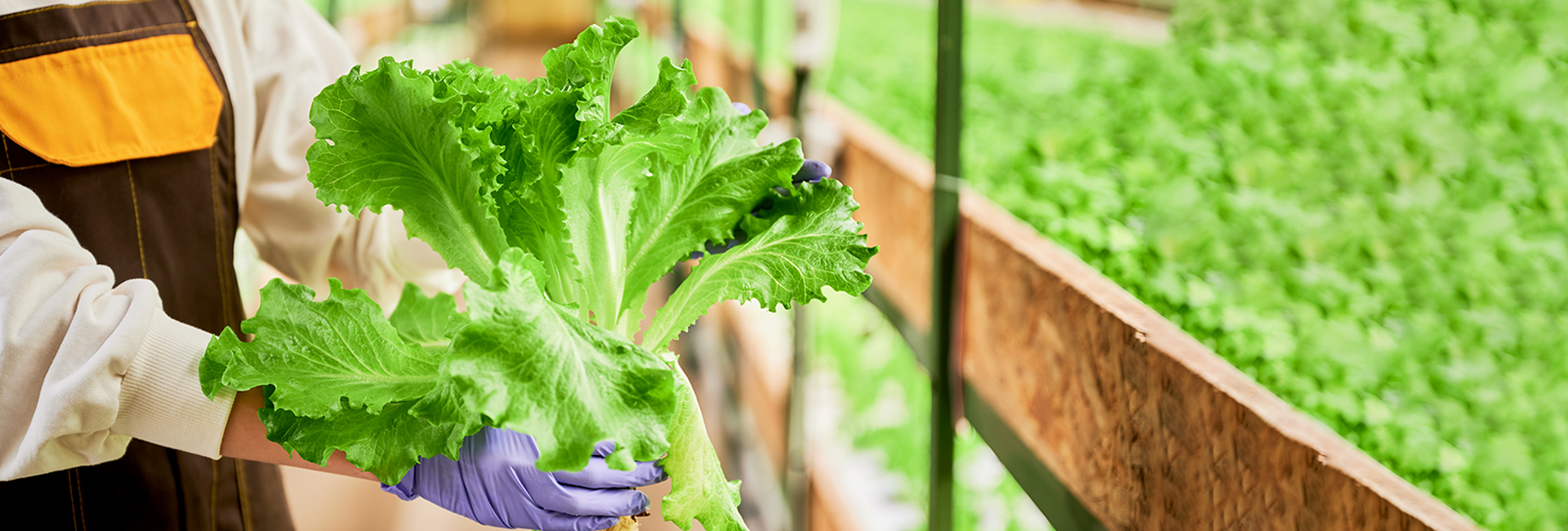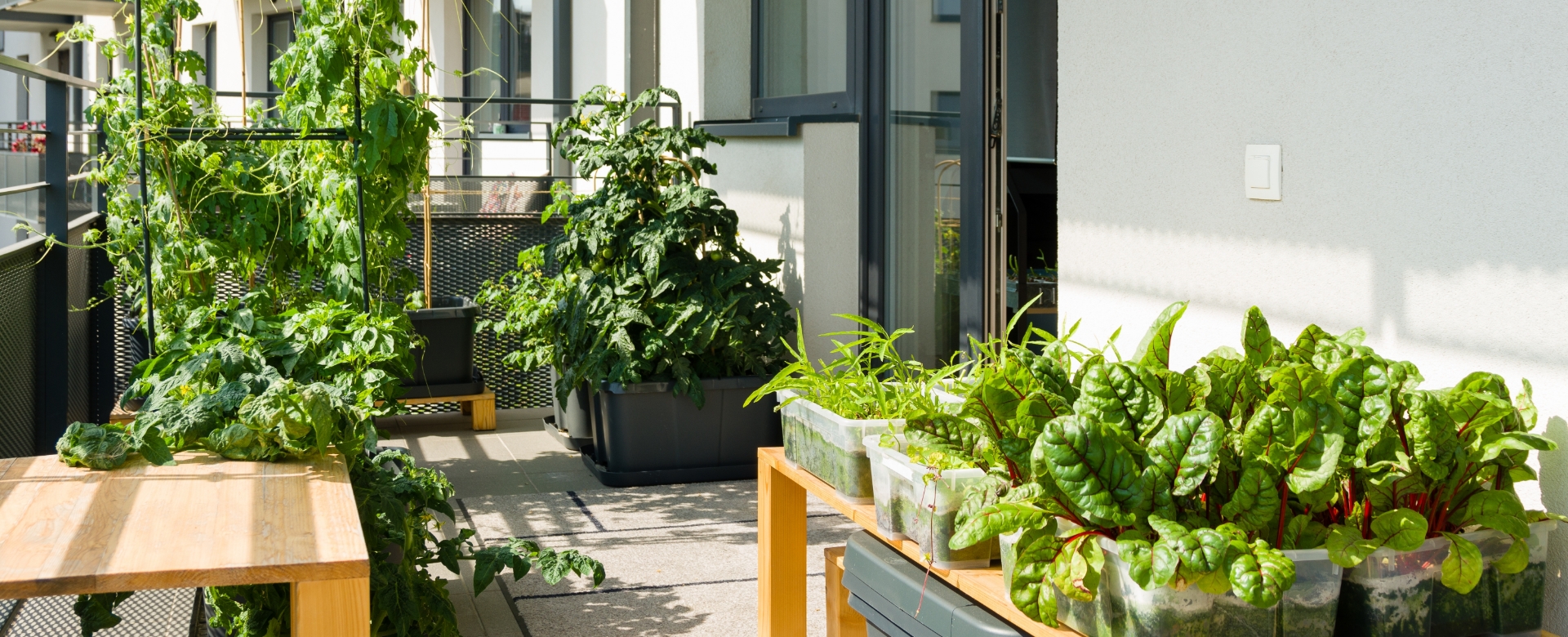The thought of growing large, sprawling melon vines might seem like an impossible dream when gardening in limited spaces.
However, by being creative and planning carefully, you can enjoy delicious melons in your small garden or even on your balcony. The secret: Growing your cantaloupes or watermelons in containers.
Fortunately, the process of using container gardening for watermelons, cantaloupes and other vining fruits is fairly easy. Today, we’ll explore how to grow melons in raised beds and/or by trellising them for a bountiful harvest.
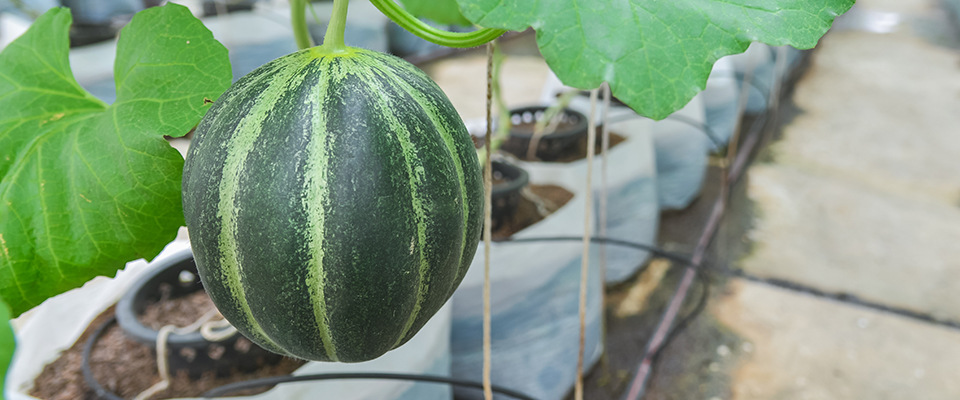
How to Grow Watermelons in Containers: Quick Tips
Container gardening is a fantastic way to grow melons, especially if you have limited space. You can use various types of containers, such as large pots, grow bags, or even specially designed melon bags.
Here are some essential tips for successfully growing melons in containers:
- Choose the Right Container: Melons have deep root systems, so it’s a good idea to choose spacious containers, ideally with a diameter and depth of at least 18 inches. Make sure your chosen container has proper drainage to prevent waterlogging. And if you’re using raised beds, avoid using pressure-treated wood.
- Select the Ideal Variety: Some melon varieties are better suited for container gardening than others. Compact or bush-type melon varieties are excellent choices. Consider “Sugar Cube” or “Minnesota Midget” varieties for cantaloupe and opt for “Sugar Baby” or “Little Darling” when selecting your watermelon.
- Quality Soil and Fertilizer: Use a well-draining, nutrient-rich potting mix. Melons are heavy feeders, so consider using a slow-release fertilizer or regularly applying a balanced fertilizer according to the package instructions.
- Sunlight: Ensure your melon containers receive at least 6-8 hours of direct sunlight daily. Place them in a sunny spot or use a portable plant caddy to move them around as needed.
- Watering: Melons need consistent moisture, so water them regularly. However, avoid watering them too much, as waterlogged soil can lead to root rot.
Now that we’ve got the hang of container melon gardening basics, let’s dive into the nitty-gritty of growing them in raised beds and mastering the art of trellising—it’s where the real fun begins!
Growing Cantaloupe in Raised Beds
Raised beds are an excellent option for growing cantaloupes in limited spaces. To get started, follow these steps:
- Choose the Right Location: Select a sunny spot for your raised bed, as cantaloupes require plenty of sunlight. Ensure the raised bed is at least 12 inches deep.
- Soil Preparation: Fill the raised bed with a well-draining garden soil mix enriched with compost or aged manure. This will provide the nutrients cantaloupes need to thrive.
- Planting: Plant cantaloupe seeds or transplants in mounds within the raised bed. Space them about 24 inches apart to allow room for growth. Water thoroughly after planting.
- Mulch and Support: Apply a layer of mulch to conserve moisture and suppress weeds. As cantaloupe vines grow, provide support using trellises or stakes to keep the fruit off the ground.
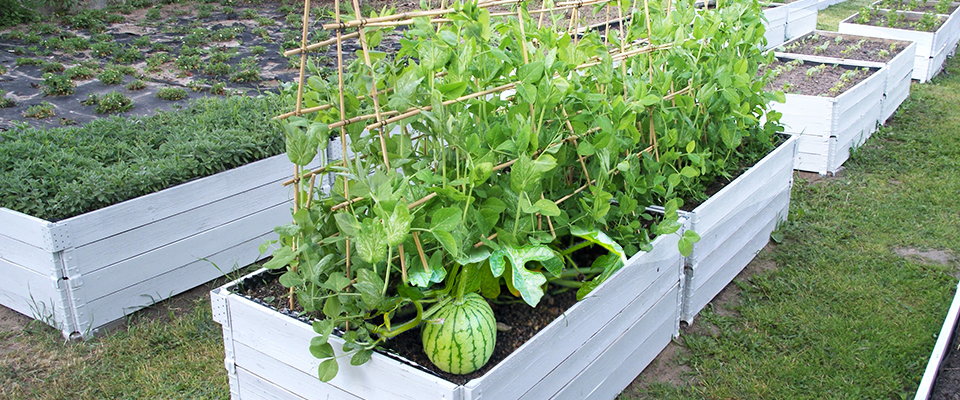
Planting Watermelon in a Raised Bed
Caring for watermelon in raised beds involves a similar process:
- Select the Right Spot: Pick a sunny spot for your raised bed and make sure it’s deep, preferably 12 to 18 inches deep.
- Soil Preparation: Fill the raised bed with a well-draining soil mix amended with organic matter. Watermelons appreciate nutrient-rich soil.
- Planting: Sow watermelon seeds or transplant seedlings into the raised bed. Space them 36 inches apart to give the vines room to spread. Water thoroughly after planting.
- Mulch and Trellising: Apply mulch to retain moisture and reduce weed competition. As watermelon vines grow, consider trellising them to save space and encourage proper airflow around the fruits.
How to Trellis Watermelon and Cantaloupe
Trellising is a space-saving technique that can help you grow healthy melon plants in small spaces. Here’s how to trellis your watermelon and cantaloupe plants:
- Install Sturdy Trellises: Set up trellises or vertical supports near your melon plants. Ensure they are tall enough to accommodate the growing vines.
- Train the Vines: Gently guide the melon vines onto the trellis as they grow. You can use soft ties or twine to secure them without damaging the plants.
- Pruning: Regularly prune the side shoots and excess foliage to encourage the plant’s energy to focus on fruit production rather than excessive foliage growth.
- Support the Fruits: As the melons develop, use slings or hammocks made of fabric or netting to support the weight of the fruit and prevent damage.
By trellising your melon plants, you not only save space but also promote good air circulation, which can reduce the risk of diseases and pests.
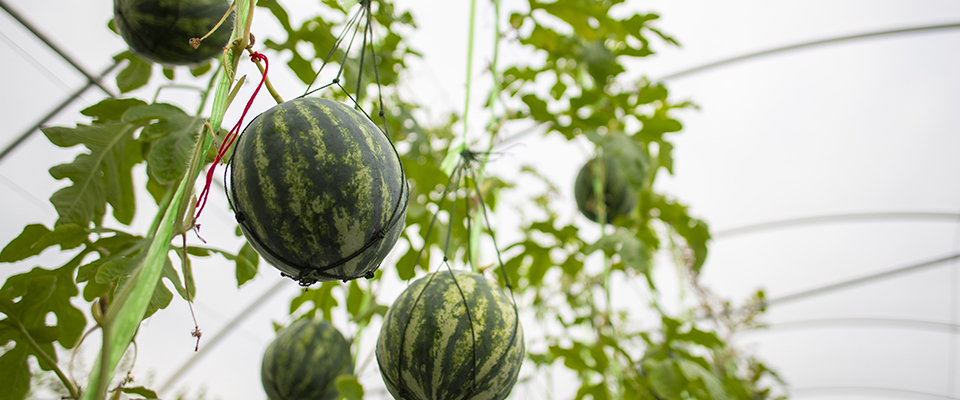
Watermelon Trellis Ideas
You have several options for support structures when trellising watermelons.
- A-Frame Trellis: This type of trellis resembles an A-shaped structure, which can support multiple vines and their fruits.
- Cattle Panel Arch: Cattle panels bent into an arch shape make a sturdy trellis that can accommodate several watermelon vines.
- Vertical Netting: Stretch netting or trellis netting vertically between two posts to create a space-efficient trellis for your watermelon vines.
Wrapping Up
Growing melons in containers, raised beds, and trellises is a rewarding way to make the most of limited gardening space. Whether you choose to cultivate cantaloupes or watermelons, following these tips for soil preparation, planting, and trellising will help you enjoy a bountiful harvest of these sweet and refreshing fruits. So, don’t let a lack of space hold you back from experiencing the joy of homegrown melons—get planting and savor the big flavor in your small garden.
To learn about how Homegrown Outlet can help you on your growing journey, be sure to visit one of our locations today!

